Now that I have been there twice, I can attest that Scotland in the flesh is every bit as enchanting as Scotland in the state of mind conjured by movies, TV shows, and hauntingly beautiful melodies. Its wine industry, however, has not fared as well.
On my first trip to Scotland in 2015, to speak at a conference in Aberdeen, the day’s headlines heralded a wine venture located not far from the city. Anticipating increased global warming, an Aberdonian had planted grapevines in Upper Largo. The hope was to yield 1200 bottles of dry white wine annually.
It took several more years before my husband, Michael, and I managed a vacation trip to Scotland. Hoping to visit the winery, we learned that the vines had succumbed to years of cold, rainy weather resulting in the venture being abandoned. We still drank many enjoyable wines, but they were mainly from France.
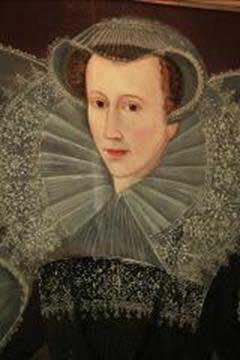
The close trading relationship between Scotland and France dates back to the Auld Alliance of 1295, assuring regular supplies of claret for thirsty Scots. Two centuries later, in the aftermath of the Hundred Years War, Scottish merchants edged out the English in garnering first dibs on the best output of Bordeaux. Mary, Queen of Scots (1542-1587), embodied the enduring relationship of these two countries whose alliance against the English united royal families, and their palates, for centuries.
For both Michael and me a trip to Scotland marked the realization of a lifelong dream. Our fascination crystallized in Los Angeles, three decades earlier, where I sang annual concerts of Scottish music conducted by a Scottish transplant, John Currie. His choral arrangements of traditional tunes were accompanied by bagpipes and drums with tartan-clad performers flown in by British Airways for the occasion. Michael enjoyed especially the post-concert receptions, for performers and audience, hosted and well-lubricated by the makers of Drambuie liqueur (scotch whisky blended with honey, herbs and spices). The unforgettable melodies born of legendary battles, fog-enshrouded castles, and glorious landscapes of lochs and mountains, cemented our intention to travel there one day.
Our friends and hosts for the first leg of our trip, Ian and Fiona (transplants from England), live out in the hilly countryside in a home stocked with excellent wines from their extensive travels. Nestled amidst pastures with lambs gamboling about and with a front yard where Highland cattle graze, their house was the focus of delicious meals conceived and executed by Ian, reflecting the bounty of the Scottish larder.
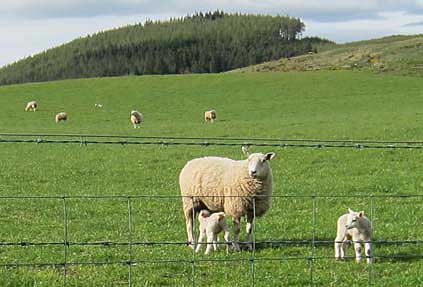
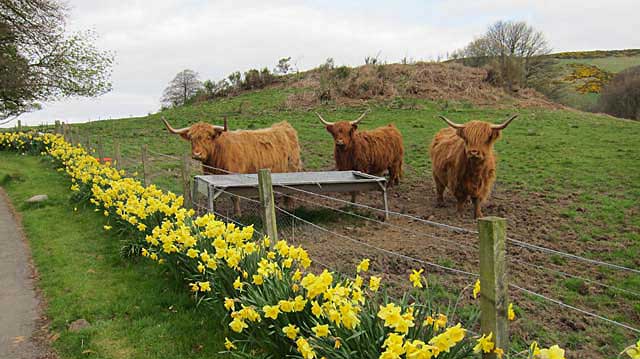
We took in several sites connected to Queen Mary within a short drive from Ian and Fiona’s home. Mary was, both figuratively and literally, a towering figure. Like her French mother, Marie de Guise, she was almost six feet tall in a time when most people barely cleared five. Crowned Queen of Scotland as an infant after the untimely death of her father, she was betrothed to François, eldest son of King Henri II of France, and sent abroad at age five to be raised at Henri’s court.

Mary married at Notre Dame Cathedral in Paris in 1558, at which time François became King Consort of Scotland. She became Queen of France when François II was crowned at the age of 15 in 1559 after an accident at a jousting tournament led to the death of King Henri II. François and Mary took up residence at the Chateau of Blois in the Loire Valley, although not for long. The young king followed his father to the grave barely a year later, felled by an illness thought to have been provoked by an ear infection.
Widowed and no longer Queen of France, Mary headed back to Scotland, the land she had last seen as a little girl. Rebellious clans, religious strife, romantic intrigue, marriages, betrayals, English plots, the birth of a son (and future king of England), imprisonment, escape and more imprisonment, were all in store for her there.
Visiting some of the places she lived, one can grasp how bleak life in Scotland may have seemed to Mary, compared to France. Perhaps this is why the TV series about Queen Mary, Reign, devoted only the last few episodes to her time in the British Isles even though more than half her life was spent there. Like so many people we queried in Scotland, we are not ashamed to admit that we enjoyed watching Mary’s romanticized exploits on this series. Having supplied some of the French antique furniture used for the sets, our curiosity had intensified about the tragic life of this legendary monarch as we strove to separate historical truth from Hollywood fiction.
With Ian and Fiona, we visited Falkland Palace where Mary had resided and excelled at something called “real tennis,” more akin to modern squash. Her tennis court remains on the grounds and open to visitors. Our next stop was Loch Leven and lunch including our first taste of cullen skink, the rich and creamy soup made from smoked haddock, potatoes, and leeks. From the restaurant’s dock, we peered across the loch to the ruins of the castle where Mary was imprisoned before escaping in 1568 and fleeing into the arms of her enemies in England.
On a sunny and blustery Sunday morning we visited Saint Andrews, the university town and hallowed bastion of golf. In the early years after Queen Mary’s return to Scotland, she visited Saint Andrews often to escape the intrigues of courtly life in Edinburgh. It was there that she determined to marry Lord Darnley, a fateful decision leading to his murder as well as her eventual abdication and execution.
Saint Andrews’ attractions included the array of Scottish farmhouse and artisan cheeses at I.J. Mellis and our introduction to the ideal vehicle for their consumption – the oatcake in all its variations (especially “rough”). We stopped for lunch just outside town, at Balgove Larder, a butcher, farmers’ market, and restaurant offering all manner of Scottish treats including fluffy, buttery scones to consume on-site or to take home.
We will always be grateful to Ian for introducing us to the Maris Piper variety of potato (or what the Scottish call a “tattie”) that we consumed at every opportunity. Not available in the U.S., the Maris Piper was introduced in the U.K. in 1966 and is the most widely grown of any variety. Intensely flavored in a buttery way its American cousins can only dream of, the Maris Piper delights – whether mashed, as chips (French fries), as crisps (potato chips), and especially when oven-roasted. Had they existed in her time, we are confident Mary would have enjoyed tucking into a plate of Maris Pipers, washed down with a glass of claret, after a match of real tennis or a round of golf.
After our days in the countryside, headquarters for the next phase of our Mary-themed quest shifted to Edinburgh and the Macdonald Holyrood Hotel. A few steps away, the Palace of Holyroodhouse is still a royal residence where Queen Elizabeth II stays for a week each year. The building sits within a verdant park that backs up to a mountain, giving the visitor a sense of a rural haven amidst a thriving city.
Mary lived at the palace during some of the most tumultuous times of her reign, including the murder of one of her courtiers in her private quarters. Included among the artifacts in the museum dedicated to Mary’s life are examples of her needlework, created during years of imprisonment in exile. They offer a touching and intimate peek into how she filled those days of seemingly interminable monotony in contrast to the fullness of her former life at court in Paris and Edinburgh.
We struggled against the incessant wind and cold to make several strolls up the steep Royal Mile from Mary’s palace at Holyrood to her other residence, Edinburgh Castle, where her crown jewels are on display. A bagpiper in traditional dress was stationed opposite St. Giles’ Cathedral, serenading tourists like us on the final leg up to the castle while stoking a reverence for the romance and history all around us.
Our first meal in Edinburgh was at the Scottish Café & Restaurant in the Scottish National Gallery. Michael fell in love with the buttery (a traditional Aberdeen butter pastry) topped with Connage Clava Brie and Ramsay of Carluke smoked ham with dark muscovado and Glengoyne Whisky marmalade. I enjoyed the Bellhaven smoked salmon with celeriac remoulade accompanied by artisan bread. With these we drank cider from Thistly Cross in East Lothian. When the Little Ice Age halted the wine industry in the British Isles in the 14th century, cider made from apples and other fruits prevailed as the low-alcohol beverage of choice for those who could not afford wine imported from France. Thistly Cross carries on this tradition, including a tangy cider made from apples, and with other varieties such as strawberry and elderflower.
Later that day, our friend Fraser phoned from Glasgow to propose that we meet Carina and Victor Contini, scions of two legendary Italian families involved in the food business in Edinburgh for generations. United in marriage as well as commerce, they have three restaurants: Contini George Street; the Scottish Café and Restaurant we had visited earlier in the day; and the Cannonball Restaurant & Bar near Edinburgh Castle.
We met up with the Continis at their flagship restaurant on George Street. It occupies a magnificent stately building that was formerly a bank, and before that the region’s corn exchange, dating back to the 19th century in this part of Edinburgh known as New Town. A Mediterranean vibe, with a nod to Carina’s passion for art, emanates from frescoes channeling Raphael and Tiepolo. The food too combines Scottish and Italian influences and ingredients, including vegetables and herbs from the restaurant’s kitchen garden, and especially the Italian wines.
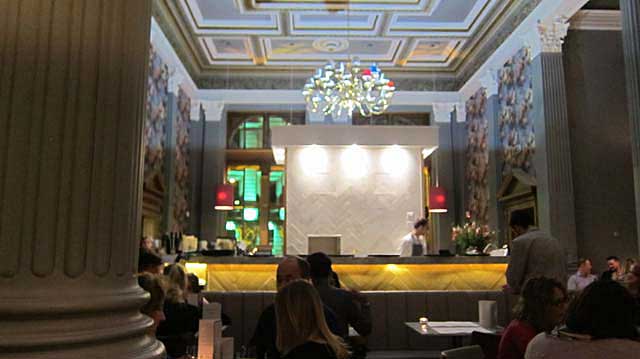
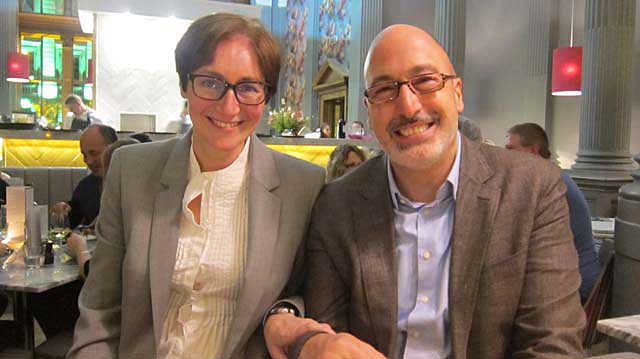
We enjoyed a bottle of one of Victor’s favorites called Imprint. A Primitivo Appassito (old growth Zinfandel made from dried grapes), its winemaker is a Californian, Mark Shannon, who fell in love with and married an Italian woman. They moved to Puglia in Southern Italy to make remarkable and intense red wines.
Consuming various dishes, we never decided which one was our favorite, although oven-roasted new potatoes (Maris Piper, of course) with wild garlic could have been the default choice. Other things we enjoyed were fried baby squid (with homemade mayonnaise), asparagus (with mint, yogurt, chili and Parmigiano-Reggiano cheese), Isle of Mull scallops (with peas, wild garlic, and speck di prosciutto) and sea bass (with Pachino tomatoes and Taggiasca olives). We were captivated by the Continis’ passion for their business as well as the food and wine comprising it.
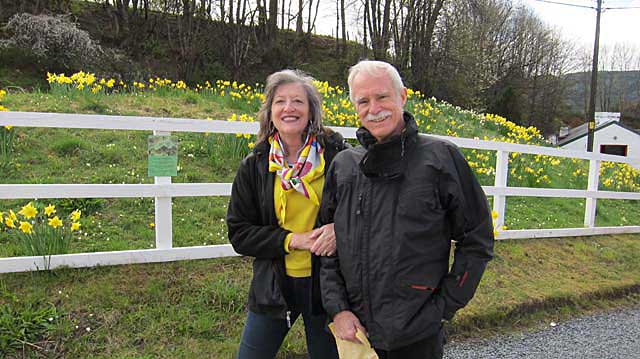
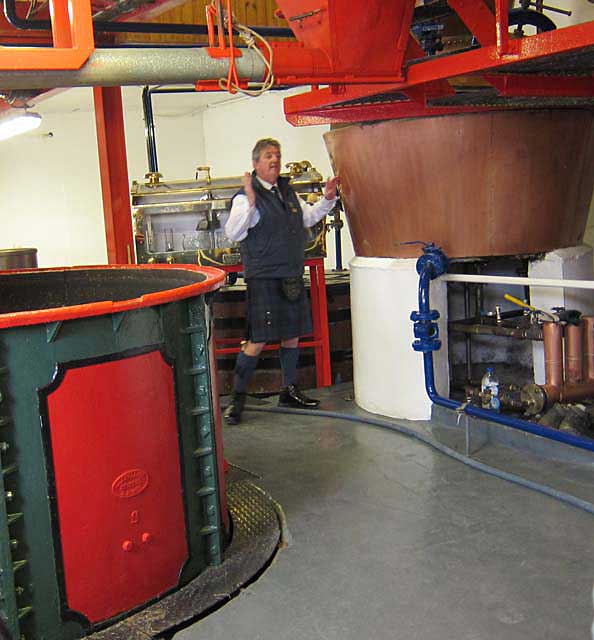
No visit to Scotland could omit a tour of a distillery where scotch whisky is made. Amidst early spring snow showers blanketing daffodils on the hillsides and with mists shrouding the nearby mountains, we spent a morning with Ian at Edradour, Scotland’s smallest distillery dating back to 1825. The tour commenced with a wee dram and ended in the distillery’s gift shop. Along the way we learned about the age-old processes in production, including the “angel’s share.” Early innovations included incentive compensation, in the form of a quota of scotch, for workers willing to endure the hot and sweaty job of drying the barley with smoke produced from burning peat.
About an hour away by train from Edinburgh, and perfect for a day-trip, we visited Scotland’s largest city, Glasgow. So different in terrain, history, and character from its long-time rival, Edinburgh, Glasgow has been the industrial and ship-building heart of Scotland for centuries.
Our day in Glasgow was capped by dinner with our friend, Fraser, at Ubiquitous Chip. Dating back to 1971, “the Chip” was founded to feature Scottish seafood, game, and traditional offerings such as haggis (minced sheep’s organs combined with onions and other savory ingredients boiled in a sheep’s stomach). Our first taste of this iconic dish was an appetizer based on venison, rather than mutton, and accompanied by mashed Maris Piper potatoes. It was rich in meaty flavors and delicious. Michael followed it with venison, paired with a dark chocolate sauce and roasted beets, an improbable combination that proved delectable. Fraser and I both opted for Barra scallops, perfectly seared and with their coral intact. The sweet, understated flavor of the sea was fresh and tantalizing. We washed it all down with a French Malbec, from Maison Castell, a gorgeous dark purple wine redolent of black currants.
Over dinner, we recounted our visit earlier in the day to the Kelvingrove Art Gallery and Museum, an imposing edifice in the center of a park. Having arrived in the midst of the daily concert on the museum’s awe-inspiring pipe organ, we were directed to the only two empty seats. We settled in next to a gentleman who had a music score spread across his lap.
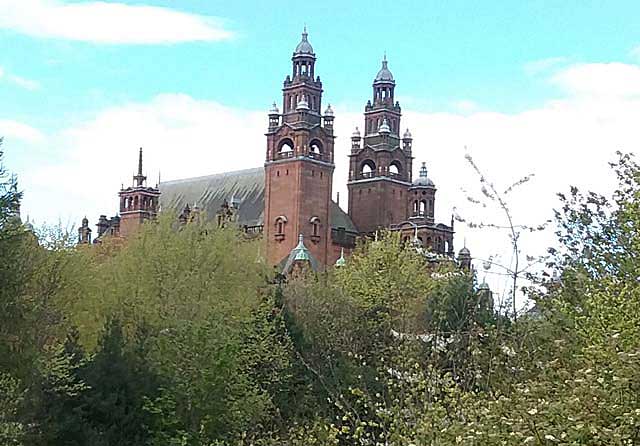
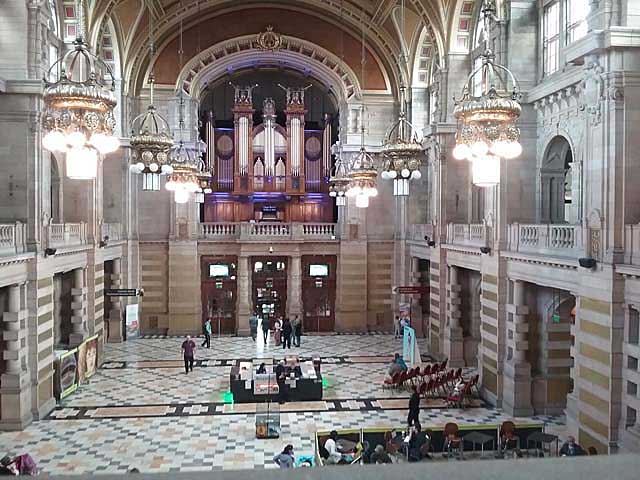
When the music stopped, I leaned over and asked him if he knew what the piece was. "Yes," he replied. "It’s the premiere of Prelude on French and I wrote it. I’m John Maxwell Geddes." We ended up visiting with him over tea in the museum’s café. His career as a composer included a commission from his old friend and ours, John Currie, the conductor whose passion for the music of his homeland had inspired our trip to Scotland. It had all come full circle. The food, the drink, the scenery, and the history had merged into a grand finale of a musical link to a mystical land.
I.J. Mellis, 149 South Street, St Andrews, KY16 9UN
Balgove Larder, Strathtyrum, St. Andrews, KY16 9SF,
Contini restaurants (including the Café at the Scottish National Gallery and Contini George Street)
Edradour Distillery, Pitlochry, PH16 5JP
The Ubiquitous Chip, 8-12 Ashton Lane, Glasgow, GB G12 8SJ
The Kelvingrove Art Gallery and Museum, Argyle Street, Glasgow, G3 8AG
The original version of this article appeared in the Spring, 2020 edition of the Quarterly Newsletter of the Wine Society of Texas, a non-profit organization dedicated to wine education and appreciation.